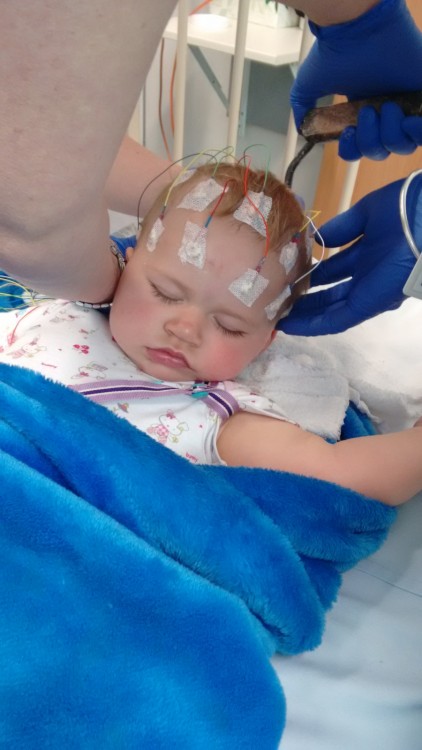When My Daughter’s Epilepsy Diagnosis Turned Out to Be Wrong
At about 6 months old, my girl started doing something my mom and I thought was odd. It was like she was “hiding” in our shoulders — darting her head down and pulling it back up quickly, but she wasn’t actually capable of understanding that game yet. My mom mentioned in passing, “It isn’t epilepsy, is it?” And then the Google search began.

Within a few minutes, I saw videos that looked similar to what my daughter was doing. I wondered if it was “infantile spasms,” which is a severe form of epilepsy. The parents on Facebook pages for it were incredibly supportive and suggested I go to a hospital right away.
Then a couple of other people suggested that it looked more like atonic head drops. And with another Google search, I suspected that, yes, this was a lot closer to what my daughter was doing. Google is a doctor’s nightmare I realize, but when used properly, it might be a literal lifesaver.
Here’s a video of my daughter moving her head and how quiet yet distinct it was.
Now that I knew what I was looking for, I was able to video episode after episode. It wasn’t hard, since she was potentially doing it hundreds of times each day. I headed off to our doctor to get it looked at. She told me she didn’t think it was anything, but we also made an appointment with a neurologist just in case.
The neurologist appointment wasn’t going to be for another six weeks. Four weeks later after the doctor returned to New Zealand from vacation, I sent an email to the clinic with a video of what was happening to my daughter just in case they needed it.
Not long after — it took hours, not days — I got a phone call saying that the doctor would see my daughter. He’d referred her to be seen as quickly as possible. And a few hours later, I got this email:
“They look like drop attacks (Hannah, this is a kind of seizure). She needs an EEG.”
It felt sort of fast, but I thought this is what probably happens for this kind of thing. But her doctor mentioned that she’d rarely seen kids get in that quickly to neurology at the hospital. I had no idea.
We went in for an electroencephalogram (EEG), and I was a bit confused that they said they got what was needed even though she didn’t have an episode while hooked up.
Two days later, we went in and saw the registrar who was under the neurologist. We talked through the family history and then towards the end of the appointment she hit us with it: Isabelle has epilepsy.
I had gone from feeling like a mom who had been overreacting to normal baby movements to feeling validated and confused. I wanted to stop being “Dr. Mom.”
That night she had her first dose of the medicine. It was supposed to make her sleepy. Over the next week or so, she progressively got worse and worse at sleeping. She had more attacks, so we increased her dose three times. She was now pulling herself to stand up and hitting her head on things. I cried while buying a secondhand head thumper helmet to stop the ever-increasing bruises.
Months after my daughter’s diagnosis, she had an EEG to see what was happening. The neurologist came in the next morning and said, “Well, her brain activity is completely normal.”
No seizures, no abnormal waves when she had these attacks, no anything. It took days to fully understand and weeks to comprehend. I was no longer the mom of a child with epilepsy. I was the mom of an undiagnosed child.
The medication she’d been on wasn’t needed, so we slowly weaned her off over the next month. A month later, we went back to the hospital for the review, and we found out she did have a genetic duplication. It was of unknown significance, so we had no idea what it meant — if anything — in the long run. Thankfully her MRI was “clear.” Her head drops had been reducing, and she was discharged shortly later.
I am the mom of a healthy, happy 2-year-old. She’s active. She’s “advanced.” She’s frustratingly vocal. She’s utterly amazing. Yet this journey is a part of who I am. It’s a part of her, too.
It’s the ride of your life. And even having just written this, I still can’t put it into words.
Editor’s note: Any medical information included is based on a personal experience. For questions or concerns regarding health, please consult a doctor or medical professional.
A version of this post first appeared on Nipenda — Life + Love.
The Mighty is asking the following: What’s one thing people might not know about your experience with disability, disease or mental illness, and what would you say to teach them? If you’d like to participate, please send a blog post to community@themighty.com. Please include a photo for the piece, a photo of yourself and 1-2 sentence bio. Check out our Submit a Story page for more about our submission guidelines.
